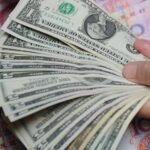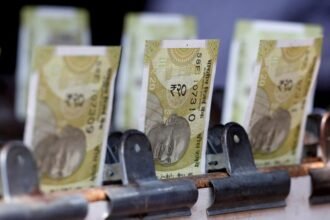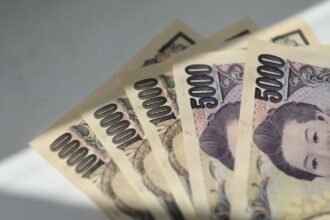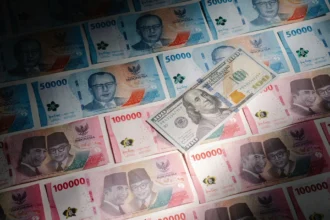- The Japanese Yen seesaws between tepid gains/minor losses at the start of a new week.
- Diminishing odds for an immediate BoJ rate hike and the risk-on mood undermine the JPY.
- Subdued USD price action caps the USD/JPY pair ahead of key central bank event risks.
The Japanese Yen (JPY) rebounds slightly from a one-week low set against its American counterpart during the Asian session on Monday, though the intraday uptick lacks follow-through. Japan’s trade deal with the US keeps the door open for an imminent Bank of Japan (BoJ) rate hike this year, which, in turn, acts as a tailwind for the JPY. The US Dollar (USD), on the other hand, kicks off the new week on a subdued note and turns out to be another factor that contributes to capping the USD/JPY pair.
The JPY bulls, however, seem reluctant to place aggressive bets as the latest optimism over a trade deal between the US and the European Union (EU) undermines traditional safe-haven assets. Adding to this, signs of easing inflation in Japan and domestic political uncertainty act as a headwind for the JPY. Furthermore, investors opt to move to the sidelines ahead of this week’s key central bank event risks – the US Federal Reserve (Fed) decision on Wednesday and the BoJ policy update on Thursday.
Japanese Yen traders seem non-committed amid mixed fundamental cues
- News of a deal between the US and European Union on Sunday, and that US and Chinese officials are meeting again to extend the trade truce, add to the trade optimism ahead of the August 1 deadline. This, in turn, boosts investors’ appetite for riskier assets and undermines demand for the safe-haven Japanese Yen at the start of a new week.
- Data released on Friday showed that consumer inflation in Japan’s capital city, Tokyo, eased more than expected in July. Apart from this, rising political risks in Japan, especially after the ruling coalition’s bruising defeat in the upper house election, might force the Bank of Japan to delay raising interest rates and keep the JPY bulls on the defensive.
- The US Dollar, on the other hand, preserves its gains registered over the past two days. This, in turn, assists the USD/JPY pair to attract buyers for the third straight day and climb above the 148.00 mark, or a one-week top during the Asian session. That said, a combination of factors might keep a lid on any further appreciating move for spot prices.
- Japan’s trade deal with the US, announced last week, has reduced economic uncertainty and raised the possibility that the BoJ will resume its tightening cycle later this year, which, in turn, could act as a tailwind for the JPY. Traders might also opt to move to the sidelines ahead of this week’s central bank event risks and key US macro releases.
- The Federal Reserve and the BoJ will announce their policy decisions on Wednesday and Thursday, respectively, and are widely expected to maintain the status quo. Investors, however, will look for cues about the future policy outlook, which, in turn, will play a key role in determining the next leg of directional move for the USD/JPY pair.
- Investors this week will also confront the release of important US macro data – the Advance Q2 GDP print on Wednesday, the Personal Consumption Expenditure (PCE) Price Index on Thursday, and the Nonfarm Payrolls report on Friday. This might further contribute to infuse volatility around the currency pair during the latter part of the week.
USD/JPY seems poised to climb further; 147.70-147.65 confluence holds the key

From a technical perspective, last week’s bounce from the 50% retracement level of the July upswing and a subsequent strength beyond the 200-hour Simple Moving Average (SMA) could be seen as a key trigger for the USD/JPY bulls. This, along with positive oscillators on daily/hourly charts, suggests that the path of least resistance for spot prices is to the upside. A sustained move and acceptance above the 148.00 mark will reaffirm the constructive outlook, which, in turn, should pave the way for additional gains towards last week’s swing high, around the 148.65 region. The momentum could extend further and allow the pair to make a fresh attempt towards conquering the 149.00 mark.
On the flip side, the 100-hour SMA, currently pegged around the 147.70-147.65 area, which now coincides with the 23.6% Fibo. retracement level could offer support to the USD/JPY pair. Any further slide could be seen as a buying opportunity near the 147.00 mark and remain limited near the 146.70-146.65 region, or the 38.2% Fibo. retracement level. Some follow-through selling below the 100-day SMA, currently pegged near the 146.55 area, could make spot prices vulnerable to retest sub-146.00 levels. This is closely followed by the 145.75 area (July 10 low), below which the currency pair could slide to the 145.20-145.15 region, or the 61.8% Fibo. retracement level, en route to the 145.00 psychological mark.
Tariffs FAQs
Tariffs are customs duties levied on certain merchandise imports or a category of products. Tariffs are designed to help local producers and manufacturers be more competitive in the market by providing a price advantage over similar goods that can be imported. Tariffs are widely used as tools of protectionism, along with trade barriers and import quotas.
Although tariffs and taxes both generate government revenue to fund public goods and services, they have several distinctions. Tariffs are prepaid at the port of entry, while taxes are paid at the time of purchase. Taxes are imposed on individual taxpayers and businesses, while tariffs are paid by importers.
There are two schools of thought among economists regarding the usage of tariffs. While some argue that tariffs are necessary to protect domestic industries and address trade imbalances, others see them as a harmful tool that could potentially drive prices higher over the long term and lead to a damaging trade war by encouraging tit-for-tat tariffs.
During the run-up to the presidential election in November 2024, Donald Trump made it clear that he intends to use tariffs to support the US economy and American producers. In 2024, Mexico, China and Canada accounted for 42% of total US imports. In this period, Mexico stood out as the top exporter with $466.6 billion, according to the US Census Bureau. Hence, Trump wants to focus on these three nations when imposing tariffs. He also plans to use the revenue generated through tariffs to lower personal income taxes.





















